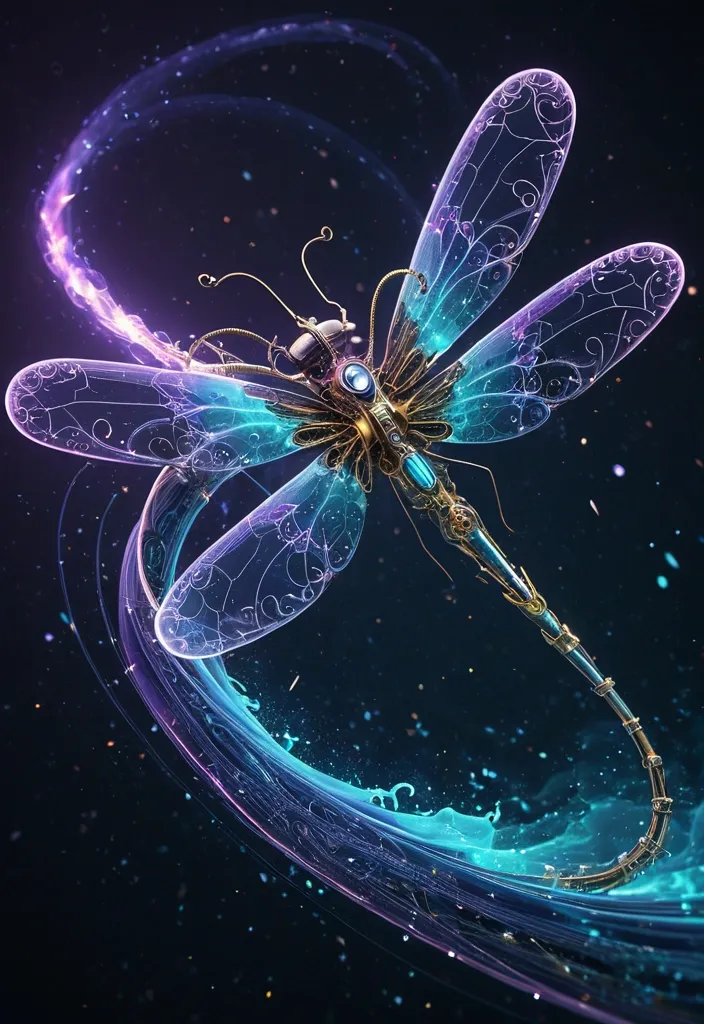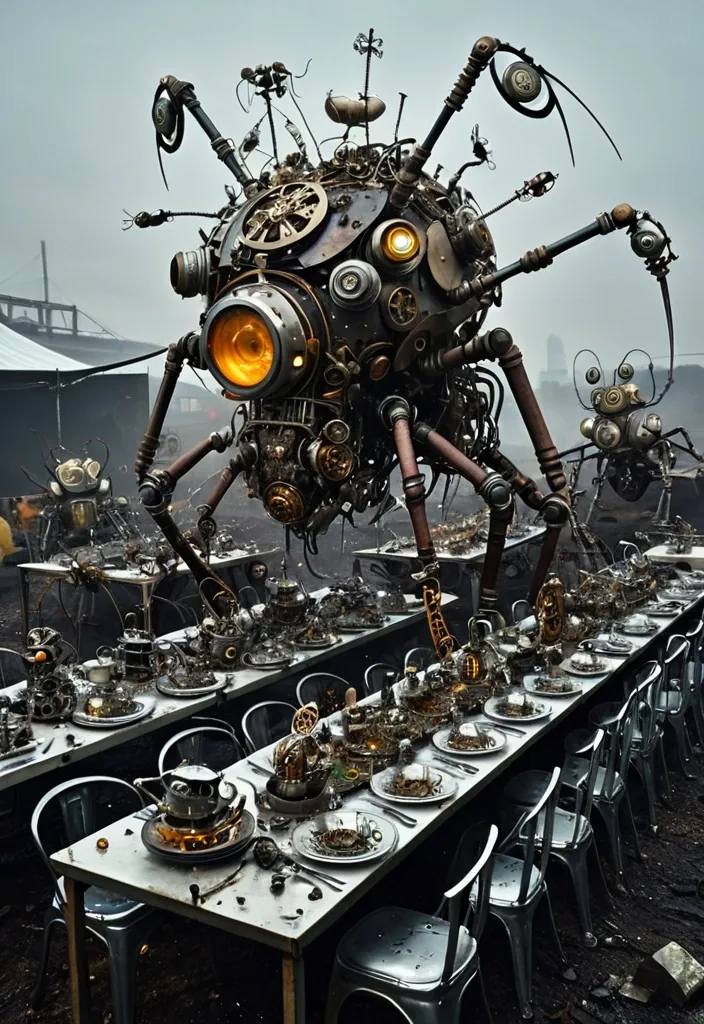Search Results for parts
Explore AI generated designs, images, art and prompts by top community artists and designers.

Masterpiece photorealistic full-length freckled brown wavy shoulder hair 40yo beautiful elfic woman wearing a blue and purple sleek , form-fitting victorian steampunk sleeveless turtleneck opened lace swimsuit , barefoot . Her face is distinctly human with expressive , bright blue eyes and a gentle smile. She have her right hand on her hip. she's laying on a red confortable sofa and hugging lovely a 25yo freckled pale long auburn hair beautiful young elfic woman with green eyes , wearing a victorian opened lace green and blue steampunk sleeveless swimsuit with clockworks parts on , barefoot , they are in a wooden steampunk boudoir. we can see a blue moon through a window ,

Masterpiece photorealistic full-length freckled brown wavy shoulder hair 40yo beautiful elfic woman wearing a blue and purple sleek , form-fitting victorian steampunk sleeveless turtleneck opened lace swimsuit , barefoot . Her face is distinctly human with expressive , bright blue eyes and a gentle smile. She have her right hand on her hip. she's laying on a red confortable sofa and hugging lovely a 25yo freckled pale long auburn hair beautiful young elfic woman with green eyes , wearing a victorian opened lace green and blue steampunk sleeveless swimsuit with clockworks parts on , barefoot , they are in a wooden steampunk boudoir. we can see a blue moon through a window ,

Masterpiece photorealistic full-length freckled brown wavy shoulder hair 40yo beautiful elfic woman wearing a blue and purple sleek , form-fitting victorian steampunk sleeveless turtleneck opened lace swimsuit , barefoot . Her face is distinctly human with expressive , bright blue eyes and a gentle smile. She have her right hand on her hip. she's laying on a red confortable sofa and hugging lovely a 25yo freckled pale long auburn hair beautiful young elfic woman with green eyes , wearing a victorian opened lace green and blue steampunk sleeveless swimsuit with clockworks parts on , barefoot , they are in a wooden steampunk boudoir. we can see a blue moon through a window ,

Masterpiece photorealistic full-length freckled brown wavy shoulder hair 40yo beautiful elfic woman wearing a blue and purple sleek , form-fitting victorian steampunk sleeveless turtleneck opened lace swimsuit , barefoot . Her face is distinctly human with expressive , bright blue eyes and a gentle smile. She have her right hand on her hip. she's laying on a red confortable sofa and hugging lovely a 25yo freckled pale long auburn hair beautiful young elfic woman with green eyes , wearing a victorian opened lace green and blue steampunk sleeveless swimsuit with clockworks parts on , barefoot , they are in a wooden steampunk boudoir. we can see a blue moon through a window ,

Creates a realistic Terminator-style portrait. Upload your photo and paste the prompt below. A more cinematic version , while Seedream is closer to realism and more accurately draws a portrait from a photo.Create a photo-realistic color portrait in a 4:3 vertical aspect ratio. I am wearing a military dress. The left side of my body remains human , while the right side (face neck upper torso under the shirt) is visible as a metallic cybernetic endoskeleton with mechanical parts and a glowing red robotic eye. The transition between skin and metal should appear realistic , with natural-looking scorched edges , slightly cracked fabric , subtle dried blood , and signs of battle damage (not a straight cut line). In backdrop a flowing , Giant Hulk , snarling under a sprawling , star-filled night sky , Glowing eyes , muscular , silhouette emerges from a mass of swirling. The Hulk is composed entirely of soft , fluid streaks that blend into one another: luminous white and pale gray at the head and shoulders , shifting into bright cyan. The head tilts gently downward , defined only by subtle curves and shadows formed by the color transitions. Cinematic dramatic lighting , dark , moody background , hyper-realistic sci-fi aesthetics of film quality , natural skin pores , no cartoons or illustrations , crisp 4K resolution. ,

Creates a realistic Terminator-style portrait. Upload your photo and paste the prompt below. A more cinematic version , while Seedream is closer to realism and more accurately draws a portrait from a photo.Create a photo-realistic color portrait in a 4:3 vertical aspect ratio. I am wearing a military dress. The left side of my body remains human , while the right side (face neck upper torso under the shirt) is visible as a metallic cybernetic endoskeleton with mechanical parts and a glowing red robotic eye. The transition between skin and metal should appear realistic , with natural-looking scorched edges , slightly cracked fabric , subtle dried blood , and signs of battle damage (not a straight cut line). In backdrop a flowing , Giant Hulk , snarling under a sprawling , star-filled night sky , Glowing eyes , muscular , silhouette emerges from a mass of swirling. The Hulk is composed entirely of soft , fluid streaks that blend into one another: luminous white and pale gray at the head and shoulders , shifting into bright cyan. The head tilts gently downward , defined only by subtle curves and shadows formed by the color transitions. Cinematic dramatic lighting , dark , moody background , hyper-realistic sci-fi aesthetics of film quality , natural skin pores , no cartoons or illustrations , crisp 4K resolution. ,

Creates a realistic Terminator-style portrait. Upload your photo and paste the prompt below. A more cinematic version , while Seedream is closer to realism and more accurately draws a portrait from a photo.Create a photo-realistic color portrait in a 4:3 vertical aspect ratio. I am wearing a military dress. The left side of my body remains human , while the right side (face neck upper torso under the shirt) is visible as a metallic cybernetic endoskeleton with mechanical parts and a glowing red robotic eye. The transition between skin and metal should appear realistic , with natural-looking scorched edges , slightly cracked fabric , subtle dried blood , and signs of battle damage (not a straight cut line). In backdrop a flowing , Giant Hulk , snarling under a sprawling , star-filled night sky , Glowing eyes , muscular , silhouette emerges from a mass of swirling. The Hulk is composed entirely of soft , fluid streaks that blend into one another: luminous white and pale gray at the head and shoulders , shifting into bright cyan. The head tilts gently downward , defined only by subtle curves and shadows formed by the color transitions. Cinematic dramatic lighting , dark , moody background , hyper-realistic sci-fi aesthetics of film quality , natural skin pores , no cartoons or illustrations , crisp 4K resolution. ,

Photo realistic full lenght white steampunk open lace shirt , brown corset with clockworks parts , green openside wrap skirt , barefoot , long brown wavy hair a bronze hair clip white pale freckled 30yo european woman with little bronze hair clip , she sitting a hand on her hair and steampunk book in the other , she is in a steampunk laboratory full of book and machinery she have a little smile ,

Photo realistic full lenght white steampunk open lace shirt , brown corset with clockworks parts , green openside wrap skirt , barefoot , long brown wavy hair a bronze hair clip white pale freckled 30yo european woman with little bronze hair clip , she sitting a hand on her hair and steampunk book in the other , she is in a steampunk laboratory full of book and machinery she have a little smile ,

A surreal landscape where ancient Mayan pyramids are constructed entirely from discarded , retro-futuristic spaceship parts. Strange , alien flora with glowing fruits grows around the metallic ruins. The sky is a swirling vortex of impossible colors , hinting at cosmic entities. The style is a blend of surrealism and digital art , with a touch of retro-futurism , evoking the works of Remedios Varo and Syd Mead. ,

A flowing , Giant dragonfly , rendered in intricate clockwork and brass gears , swims through an abstract nebula of swirling digital data streams. The dragonfly bending into impossible angles , complex mechanism of interconnected parts , with glowing LED eyes peering out from the cosmic dust: electric blues , deep purples at the top and edge , shifting into bright cyan. The head tilts gently downward , defined only by subtle curves and shadows formed by the color transitions. perfect whale breaching a vast , calm ocean. Style: Celestial , ethereal , abstract , digital art smoking: Dramatic backlighting , bright glowing particles , contrasting dark background Composition: dynamic diagonal composition , upward gaze Details: Sparkling white waves and smoke , streaking white light trails , sense of movement and wonder , magical atmosphere Quality: High detail , 4K , Masterpiece , Rendered in Octane ,

A flowing , Giant spacecraft , rendered in intricate clockwork and brass gears , swims through an abstract nebula of swirling digital data streams. The spacecraft bending into impossible angles , complex mechanism of interconnected parts , with glowing LED eyes peering out from the cosmic dust: electric blues , deep purples at the top and edge , shifting into bright cyan. The head tilts gently downward , defined only by subtle curves and shadows formed by the color transitions. perfect whale breaching a vast , calm ocean. Style: Celestial , ethereal , abstract , digital art smoking: Dramatic backlighting , bright glowing particles , contrasting dark background Composition: dynamic diagonal composition , upward gaze Details: Sparkling white waves and smoke , streaking white light trails , sense of movement and wonder , magical atmosphere Quality: High detail , 4K , Masterpiece , Rendered in Octane ,

A flowing , Giant spacecraft , rendered in intricate clockwork and brass gears , swims through an abstract nebula of swirling digital data streams. The spacecraft bending into impossible angles , complex mechanism of interconnected parts , with glowing LED eyes peering out from the cosmic dust: electric blues , deep purples at the top and edge , shifting into bright cyan. The head tilts gently downward , defined only by subtle curves and shadows formed by the color transitions. perfect whale breaching a vast , calm ocean. Style: Celestial , ethereal , abstract , digital art smoking: Dramatic backlighting , bright glowing particles , contrasting dark background Composition: dynamic diagonal composition , upward gaze Details: Sparkling white waves and smoke , streaking white light trails , sense of movement and wonder , magical atmosphere Quality: High detail , 4K , Masterpiece , Rendered in Octane ,

photoralistic full lenght , white and bronze sleeveless , openside dark-blue swimsuit , matching boots , shoulder wavy brown hair , white pale freckled 40yo beautiful woman with steampunk backpack , a steampunk gun in right hand. she is in a M.C. Escher labyrinth with parts of different times of history cinematic style ,

photoralistic full lenght , white and bronze sleeveless , openside dark-blue swimsuit , matching boots , shoulder wavy brown hair , white pale freckled 40yo beautiful woman with steampunk backpack , a steampunk gun in right hand. she is in a M.C. Escher labyrinth with parts of different times of history cinematic style ,

photoralistic full lenght , white and bronze sleeveless , openside dark-blue swimsuit , matching boots , shoulder wavy brown hair , white pale freckled 40yo beautiful woman with steampunk backpack , a steampunk gun in right hand. she is in a M.C. Escher labyrinth with parts of different times of history cinematic style ,

photoralistic full lenght , white and bronze sleeveless , openside dark-blue swimsuit , matching boots , shoulder wavy brown hair , white pale freckled 40yo beautiful woman with steampunk backpack , a steampunk gun in right hand. she is in a M.C. Escher labyrinth with parts of different times of history cinematic style ,

A bizarre gathering of robotic insects are constructing an elaborate 'feast' using discarded clockwork parts and polished stones. They appear to be performing a ritualistic dinner service amidst a junkyard landscape under a dim , industrial sky. The overall aesthetic is steampunk combined with a peculiar , mechanical surrealism. ,

A bizarre gathering of robotic insects are constructing an elaborate 'feast' using discarded clockwork parts and polished stones. They appear to be performing a ritualistic dinner service amidst a junkyard landscape under a dim , industrial sky. The overall aesthetic is steampunk combined with a peculiar , mechanical surrealism. ,

Creates a realistic Terminator-style portrait. Upload your photo and paste the prompt below. A more cinematic version , while Seedream is closer to realism and more accurately draws a portrait from a photo.Create a photo-realistic color portrait in a 4:3 vertical aspect ratio. I am wearing a military dress. The left side of my body remains human , while the right side (face neck upper torso under the shirt) is visible as a metallic cybernetic endoskeleton with mechanical parts and a glowing red robotic eye. The transition between skin and metal should appear realistic , with natural-looking scorched edges , slightly cracked fabric , subtle dried blood , and signs of battle damage (not a straight cut line). In backdrop a flowing , Giant Hulk , snarling under a sprawling , star-filled night sky , Glowing eyes , muscular , silhouette emerges from a mass of swirling. The Hulk is composed entirely of soft , fluid streaks that blend into one another: luminous white and pale gray at the head and shoulders , shifting into bright cyan. The head tilts gently downward , defined only by subtle curves and shadows formed by the color transitions. Cinematic dramatic lighting , dark , moody background , hyper-realistic sci-fi aesthetics of film quality , natural skin pores , no cartoons or illustrations , crisp 4K resolution. ,

Terminator-style. Wearing a military dress. The left side of my body remains skull , while the right side is visible as a metallic cybernetic exoskeleton with mechanical parts and a glowing red robotic eye. stands on the jagged edge of a broken stone ledge , facing a towering cyberpunk vehicle that looms above them. angled slightly as they brace against the rising wind. The massive Noumea art style spaceship vibrant color scheme , intense design , a alien pilot sitting in the glass cockpit , central core emitting glowing blue energy , glowing a visceral blue that bleeds into the surrounding darkness. Shards of debris and petal-like embers swirl through the air , catching faint light as they drift around both figures. The background fades into deep shadow , making the scale of the spaceship feel even more overwhelming. The scene carries a sense of suspended confrontation , quiet dread , and vast , oppressive power. ,

Creates a realistic Terminator-style portrait. Upload your photo and paste the prompt below. A more cinematic version , while Seedream is closer to realism and more accurately draws a portrait from a photo. Create a photo-realistic color portrait in a 4:3 vertical aspect ratio. I am wearing a military dress. The left side of my body remains human , while the right side (face + neck + upper torso under the shirt) is visible as a metallic cybernetic endoskeleton with mechanical parts and a glowing red robotic eye. The transition between skin and metal should appear realistic , with natural-looking scorched edges , slightly cracked fabric , subtle dried blood , and signs of battle damage (not a straight cut line). In backdrop a flowing , Giant Hulk , snarling under a sprawling , star-filled night sky , Glowing eyes , muscular , silhouette emerges from a mass of swirling. The Hulk is composed entirely of soft , fluid streaks that blend into one another: luminous white and pale gray at the head and shoulders , shifting into bright cyan. The head tilts gently downward , defined only by subtle curves and shadows formed by the color transitions. Cinematic dramatic lighting , dark , moody background , hyper-realistic sci-fi aesthetics of film quality , natural skin pores , no cartoons or illustrations , crisp 4K resolution. ,

nousr robot , complex 3d render ultra detailed of a beautiful porcelain profile woman android face , cyborg , robotic parts , 150 mm , beautiful studio soft light , rim light , vibrant details , luxurious cyberpunk , hyperrealistic , anatomical , facial muscles , cable electric wires , microchip , elegant , beautiful background , octane render , 8k , whole body ,

full lenght , a beautiful european freckled female with wavy brown shoulder hair in her mid twenty in steampunk green and gold sleeveless zipper swimsuit , gentle smile a hand on hip she's standing lovely in front of a window in a steampunk laboratory with japanese influence , some plants and clokworks parts , machinery , steampunk cinematic style ,





